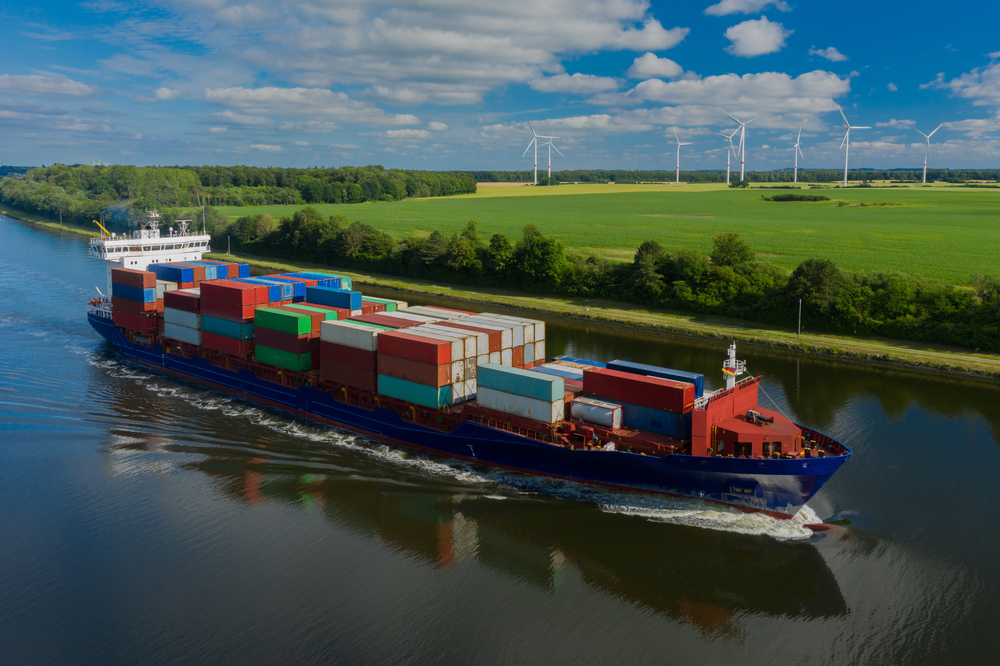GHG Emissions, Industrial, Wind - March 13, 2024
Cargill Tests Wind Propulsion Tech
Cargill revealed results of the six-month test period of the Pyxis Ocean, a vessel retrofitted with wind propulsion technology.
The MC Shipping Kamsarmax vessel retrofitted with two WindWings® — large solid wind sails developed by BAR Technologies — has achieved performance consistent with what was predicted, which is equivalent to an average of 3 tons of fuel per day.
The Pyxis Ocean hit open waters in August 2023, and during the first six months of testing it has sailed the Indian Ocean, Pacific Ocean, and North and South Atlantic, as well as passed Cape Horn and the Cape of Good Hope.
The ship was retrofitted with two WindWings®, which measure 37.5 meters in height and resemble large airplane wings. The wings are installed vertically to catch the wind and propel the ship forward, allowing the ship’s engine to be turned down so the ship can travel at the same speed as a conventional ship using less fuel.
The WindWings® are controlled by a touch panel on the bridge, and simple traffic light system tells the crew when to raise or lower the sails. Once raised, the operation is fully automated. Sensors onboard constantly measure the wind, and the sails self-adjust to the optimal configuration.
“We are encouraged by the results and have learned a great deal about implementing wind assisted propulsion on dry bulk vessels,” said Jan Dieleman, president of Cargill’s Ocean Transportation business, in a statement. “We could never have done this alone — BAR Technologies and MC Shipping and have been fantastic partners in making the Pyxis Ocean a reality as well as the captain and crew. We are on the leading edge of change in the shipping industry and believe technologies that harness the wind could be an important, cost-effective way to achieve our decarbonization goals in the short, medium and long-term.”
Wind assisted propulsion has potential to be a cost-efficient way of supporting the International Maritime Organization's (IMO) new greenhouse gas strategy. One of the IMOs 2030 targets is to have 5 percent, striving for 10 percent, of energy coming from very low carbon sources by 2030, and wind-assisted propulsion could be an important way of achieving this.
“Cargill is creating ways for all WAP vessels — not just the Pyxis Ocean — to operate on global trade routes,” added Dieleman. “So far, we’ve engaged with more than 250 ports to find ways of enabling vessel with large scale WAP to berth."
Cargill will continue the testing and experimenting of operational, technical and commercial aspects of the Pyxis Ocean to incorporate the maximum amount of learning into potential design of future installations before scaling up.
Read These Related Articles:
- Cargill Reduces Emissions by 11%
- Cargill Adopts Wind Tech
- Cargill Signs Wind Offtake Agreement
- Cargill Signs its Largest Global Physical PPA
- Cargill furthers initiatives to reduce GHG emissions by 30% by 2030
Share this valuable information with your colleagues using the buttons below:
« Back to NewsStay Up-To-Date












